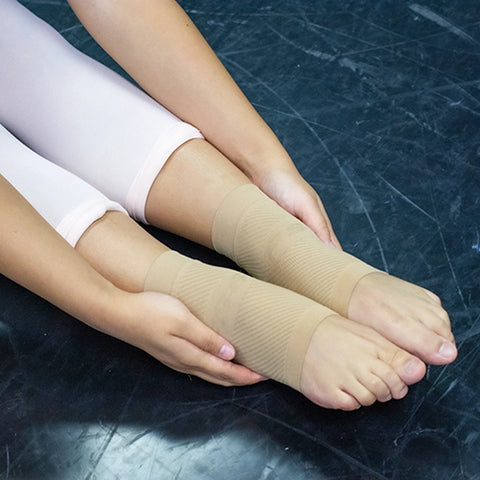
How Compression Sleeves Can Help Dancers
Dance is one of the most beautiful sports in the world, and it’s also one of the most grueling. Dancers, especially ballet dancers, are known to spend hours on their feet, learning to move weightlessly by leveraging immense strength and control. Ballet dancers can rehearse for up to six hours a day during a performance season, in addition to hours spent on warm-ups, stretching, and pre-rehearsal exercises like yoga and Pilates. What with the intense nature of dance, it’s no wonder that many dancers experience muscle soreness and injuries in their thighs, knees, and legs. Dancers have long relied on old tricks like ice water baths to ease their leg pain. Now, however, dancers are turning to a new technology: compression sleeves. These sleeves, once used exclusively in the medical field to improve blood flow in patients, are now being used by athletes from runners to CrossFitters. Dancers can use compression sleeves to recover from their rehearsals, enhance their performances, and reduce muscle soreness. Read below to learn more about how compression can help dancers.

Improved performance
According to a study performed by the Australian Sports Commission, compression sleeves can help dancers improve their performance. This is because the graduated compression of the sleeves trains the veins to return blood upwards to the heart, so that re-oxygenated blood can reach the extremities faster. Because of this improved blood flow, dancers who wear compression sleeves can improve their jumping power, increase their vertical height, and push through long passages of choreography with minimal soreness. This is especially useful for pointe work, the most extreme form of ballet, which requires dancers to place a significant amount of weight on their calf muscles for long periods of time.
Prevention of injury
Dance is a world well-known for its leg and foot injuries. Compression sleeves can help prevent common dance injuries like deep vein thrombosis, calf strains, and shin splints by increasing the temperature of the skin and muscle beneath the sleeve and providing support for the muscle tissue. Compression sleeves can also be used to control minor swelling, reduce inflammation, and reduce micro-trauma. This assists injury recovery and allows dancers to get back on the floor more quickly.
Nonrestrictive material
OS1st’s compression sleeves are made from a high-quality material that won’t restrict movement while the wearer is dancing. The sleeves fit like a second skin, and move naturally with the body’s joints. The material breathes well, and many dancers report feeling lighter and springier while wearing the sleeves. Compression sleeves also create a slimming silhouette—something that every dancer craves.


